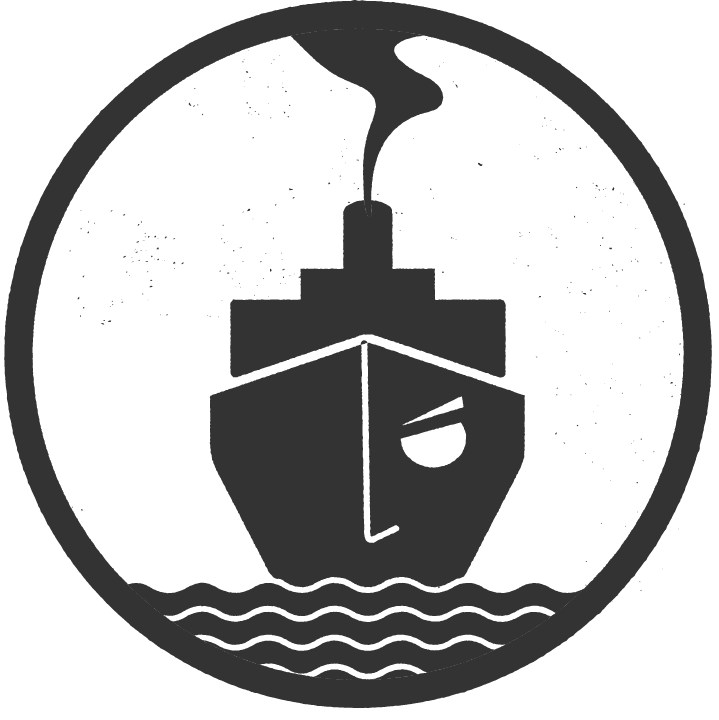product or reactant favored calculator24 Apr product or reactant favored calculator
Posted at 00:35h
in
shishito pepper jelly
by
With our tool, you need to enter the respective value for Initial Concentration of Reactant A, Reaction Rate Constant 1 & Time and hit the . Explanation: Kc = [P.concentration]x [R.concentration]y. Click hereto get an answer to your question Two half - reaction of an electrochemical cell are given below : MnO4^- (aq) + 8H^ + + 5e^ - Mn^2 + (aq) + 4H2O (l) ; E^ = + 1.51 V Sn^2 + (aq) Sn^4 + (aq) + 2e^ - , E^ = + 0.15 V Construct the redox equation from the standard potential of the cell and predict if the reaction is reactant favoured or product favoured . Thus, a system in chemical equilibrium is said to be in stable state.What does the equilibrium position depend on?As detailed in the above section, the position of equilibrium for a given reaction does not depend on the starting concentrations and so the value of the equilibrium constant is truly constant. A comparison of \(Q\) with \(K\) indicates which way the reaction shifts and which side of the reaction is favored: Another important concept that is used in the calculation of the reaction quotient is called an activity. product or reactant favored calculator; product or reactant favored calculator. The relevant equations are: G = - RT ln(K eq) G = H - TS or combining the two equations: H - TS = - RT ln(K eq) Where: G is the change in free energy K eq is the equilibrium constant (remember K eq Example: Cu + O2 + CO2 + H2O = Cu2 (OH)2CO3. Calculation results will appear as below. powder, sprayed into a bunsen burner. Step 2: Substitute in given values and solve: \[K = \dfrac{\left( 2.2 \right) \left( 1.6 \right)}{\left( 1.20 \right) \left( 0.60 \right)} = 4.9 \nonumber \], \[\ce{CO} \left( g \right) + \ce{H_2O} \left( g \right) \rightleftharpoons \ce{H_2} \left( g \right) + \ce{CO_2} \left( g \right) \nonumber \]. youth topics for discussion pdf 29 Oct. product or reactant favored calculatorwtol sports reporters. Substitution is typically preferred over elimination unless a strong bulky base is used. Products are highly dependent on the nucleophile /base used. When you plug in your x's and stuff like that in your K equation, you might notice a concentration with (2.0-x) or whatever value instead of 2.0. The LibreTexts libraries arePowered by NICE CXone Expertand are supported by the Department of Education Open Textbook Pilot Project, the UC Davis Office of the Provost, the UC Davis Library, the California State University Affordable Learning Solutions Program, and Merlot. Here's what's meant by that. In the section "Visualizing Q," the initial values of Q depend on whether initially the reaction is all products, or all reactants. \[\ce{HCl(g) + NaOH(aq) \rightleftharpoons NaCl(aq) + H_2O(l)} \nonumber\]. E LeMay, B. , the equilibrium condition is satisfied.What factor does equilibrium constant depend on?Equilibrium constant depends on temperature and is independent of the actual quantities of reactants and products, the presence of a catalyst and the presence of inert material. If the equilibrium constant value is a large number, like 100, or a very large number, like \(1 \times 10^{15}\), it indicates that the products (numerator) are a great deal larger than the reactants. product or reactant favored calculator. The value of this constant can tell you which side (reactant or product) is favored. Calculate H and S for the reaction. When you're talking about "if there are more products, reactants are favoured" that is Le Chatelier's Principle, and is based on . Chemical equation product calculator and the limiting reactant calculator widely used by many people. The adolescent protagonists of the sequence, Enrique and Rosa, are Arturos son and , The payout that goes with the Nobel Prize is worth $1.2 million, and its often split two or three ways. Performance cookies are used to understand and analyze the key performance indexes of the website which helps in delivering a better user experience for the visitors. With large \(K\) values, most of the material at equilibrium is in the form of products and with small \(K\) values, most of the material at equilibrium is in the form of the reactants. If Q Table of Contents show 1 Does equilibrium favor reactants or products? Nikos Skuras [rozmowa], 449 mln dzieci yje w strefach konfliktw zbrojnych, Gowarczw: odnaleziono srebrno-zot sukienk z obrazu Matki Boej, Abp Ry: w synodzie potrzebujemy odkrywania prawdy, ale w relacji z Jezusem, Bp Zieliski zasiad na katedrze w Koszalinie, Rosja: Kobieta, ktra wpacia datek na armi ukraisk, zatrzymana za zdrad stanu. The equilibrium constant (\(K\)) is a mathematical relationship that shows how the concentrations of the products vary with the concentration of the reactants. 6 What does it mean for a reaction to favor the products? This is a little off-topic, but how do you know when you use the 5% rule? Is the reaction product-favored or reactant-favored? Each pure liquid or solid has an activity of one and can be functionally omitted. Chapter 18 Chemical reactions begin when the reactants come into contact and continue until at least one reactant, (the limiting So it's an endemic reaction. What can the value of Keq tell us about a reaction? This expression might look awfully familiar, because, From Le Chteliers principle, we know that when a stress is applied that moves a reaction away from equilibrium, the reaction will try to adjust to get back to equilbrium. The cookie is used to store the user consent for the cookies in the category "Performance". Since the numerator would have to be greater than the denominator in this case to yeild answer greater than 1, therefore the relative product concentration would have to be greater than that of reactants. According to Le Chatelier's principle, if pressure is increased, then the equilibrium shifts to the side with the fewer number of moles of gas. Which statement is true about a chemical reaction at equilibrium? A strong acid or a base means that they have a lot of energy and are very reactive while weaker acids and bases have lower energy.Why do weak acids have equilibrium?Weak acids only dissociate partially in water. Just another site product or reactant favored calculator. This cookie is set by GDPR Cookie Consent plugin. When describing/comparing K as it's own value (K < 10 -3 or K > 10 3 ), saying products/reactants are favored means that's where the equilibrium is more likely to exist - if K < 10 -3, then there are more REACTANTS at equilibrium, which means that reactants are favored at equilibrium Which of the following correctly describes chemical equilibrium? products only products only productfavored product favored weak acids will have a smaller1ha) weak bases will have a smallerlab than strong acids. Concentration of the molecule in the substance is always constant. reactants and products involved in a chemical reaction do not change or cannot change in time without the application of external influence. In other words, the concentration of the reactants is higher than it would be at equilibrium; you can also think of it as the product concentration being too low. To balance an equation, it is necessary that there are the same number of atoms on the left side of the equation as the right. { Balanced_Equations_and_Equilibrium_Constants : "property get [Map MindTouch.Deki.Logic.ExtensionProcessorQueryProvider+<>c__DisplayClass228_0.b__1]()", Calculating_an_Equilibrium_Concentration : "property get [Map MindTouch.Deki.Logic.ExtensionProcessorQueryProvider+<>c__DisplayClass228_0.b__1]()", Calculating_An_Equilibrium_Concentrations : "property get [Map MindTouch.Deki.Logic.ExtensionProcessorQueryProvider+<>c__DisplayClass228_0.b__1]()", Calculating_an_Equilibrium_Constant_Kp_with_Partial_Pressures : "property get [Map MindTouch.Deki.Logic.ExtensionProcessorQueryProvider+<>c__DisplayClass228_0.b__1]()", Determining_the_Equilibrium_Constant : "property get [Map MindTouch.Deki.Logic.ExtensionProcessorQueryProvider+<>c__DisplayClass228_0.b__1]()", Difference_Between_K_And_Q : "property get [Map MindTouch.Deki.Logic.ExtensionProcessorQueryProvider+<>c__DisplayClass228_0.b__1]()", Dissociation_Constant : "property get [Map MindTouch.Deki.Logic.ExtensionProcessorQueryProvider+<>c__DisplayClass228_0.b__1]()", "Effect_of_Pressure_on_Gas-Phase_Equilibria" : "property get [Map MindTouch.Deki.Logic.ExtensionProcessorQueryProvider+<>c__DisplayClass228_0.b__1]()", Equilibrium_Calculations : "property get [Map MindTouch.Deki.Logic.ExtensionProcessorQueryProvider+<>c__DisplayClass228_0.b__1]()", Kc : "property get [Map MindTouch.Deki.Logic.ExtensionProcessorQueryProvider+<>c__DisplayClass228_0.b__1]()", Kp : "property get [Map MindTouch.Deki.Logic.ExtensionProcessorQueryProvider+<>c__DisplayClass228_0.b__1]()", Law_of_Mass_Action : "property get [Map MindTouch.Deki.Logic.ExtensionProcessorQueryProvider+<>c__DisplayClass228_0.b__1]()", Mass_Action_Law : "property get [Map MindTouch.Deki.Logic.ExtensionProcessorQueryProvider+<>c__DisplayClass228_0.b__1]()", Principles_of_Chemical_Equilibria : "property get [Map MindTouch.Deki.Logic.ExtensionProcessorQueryProvider+<>c__DisplayClass228_0.b__1]()", The_Equilibrium_Constant : "property get [Map MindTouch.Deki.Logic.ExtensionProcessorQueryProvider+<>c__DisplayClass228_0.b__1]()", The_Reaction_Quotient : "property get [Map MindTouch.Deki.Logic.ExtensionProcessorQueryProvider+<>c__DisplayClass228_0.b__1]()" }, { "Acid-Base_Equilibria" : "property get [Map MindTouch.Deki.Logic.ExtensionProcessorQueryProvider+<>c__DisplayClass228_0.b__1]()", Chemical_Equilibria : "property get [Map MindTouch.Deki.Logic.ExtensionProcessorQueryProvider+<>c__DisplayClass228_0.b__1]()", Dynamic_Equilibria : "property get [Map MindTouch.Deki.Logic.ExtensionProcessorQueryProvider+<>c__DisplayClass228_0.b__1]()", Heterogeneous_Equilibria : "property get [Map MindTouch.Deki.Logic.ExtensionProcessorQueryProvider+<>c__DisplayClass228_0.b__1]()", Le_Chateliers_Principle : "property get [Map MindTouch.Deki.Logic.ExtensionProcessorQueryProvider+<>c__DisplayClass228_0.b__1]()", Physical_Equilibria : "property get [Map MindTouch.Deki.Logic.ExtensionProcessorQueryProvider+<>c__DisplayClass228_0.b__1]()", Solubilty : "property get [Map MindTouch.Deki.Logic.ExtensionProcessorQueryProvider+<>c__DisplayClass228_0.b__1]()" }, [ "article:topic", "Reaction Quotient", "showtoc:no", "license:ccby", "licenseversion:40", "author@Kellie Berman", "author@Rebecca Backer", "author@Deepak Nallur" ], https://chem.libretexts.org/@app/auth/3/login?returnto=https%3A%2F%2Fchem.libretexts.org%2FBookshelves%2FPhysical_and_Theoretical_Chemistry_Textbook_Maps%2FSupplemental_Modules_(Physical_and_Theoretical_Chemistry)%2FEquilibria%2FChemical_Equilibria%2FThe_Reaction_Quotient, \( \newcommand{\vecs}[1]{\overset { \scriptstyle \rightharpoonup} {\mathbf{#1}}}\) \( \newcommand{\vecd}[1]{\overset{-\!-\!\rightharpoonup}{\vphantom{a}\smash{#1}}} \)\(\newcommand{\id}{\mathrm{id}}\) \( \newcommand{\Span}{\mathrm{span}}\) \( \newcommand{\kernel}{\mathrm{null}\,}\) \( \newcommand{\range}{\mathrm{range}\,}\) \( \newcommand{\RealPart}{\mathrm{Re}}\) \( \newcommand{\ImaginaryPart}{\mathrm{Im}}\) \( \newcommand{\Argument}{\mathrm{Arg}}\) \( \newcommand{\norm}[1]{\| #1 \|}\) \( \newcommand{\inner}[2]{\langle #1, #2 \rangle}\) \( \newcommand{\Span}{\mathrm{span}}\) \(\newcommand{\id}{\mathrm{id}}\) \( \newcommand{\Span}{\mathrm{span}}\) \( \newcommand{\kernel}{\mathrm{null}\,}\) \( \newcommand{\range}{\mathrm{range}\,}\) \( \newcommand{\RealPart}{\mathrm{Re}}\) \( \newcommand{\ImaginaryPart}{\mathrm{Im}}\) \( \newcommand{\Argument}{\mathrm{Arg}}\) \( \newcommand{\norm}[1]{\| #1 \|}\) \( \newcommand{\inner}[2]{\langle #1, #2 \rangle}\) \( \newcommand{\Span}{\mathrm{span}}\)\(\newcommand{\AA}{\unicode[.8,0]{x212B}}\), status page at https://status.libretexts.org, If \(Q>K\), then the reaction favors the reactants. You use the 5% rule when using an ice table. Free Energy and Equilibrium. Coefficients in the equation become exponents in the equilibrium constant expression. So the other part of this question is identify whether the reactions air product favored or, um, favor the reactant. a. Direct link to Sam Woon's post The equilibrium constant , Definition of reaction quotient Q, and how it is used to predict the direction of reaction, start text, a, A, end text, plus, start text, b, B, end text, \rightleftharpoons, start text, c, C, end text, plus, start text, d, D, end text, Q, equals, start fraction, open bracket, start text, C, end text, close bracket, start superscript, c, end superscript, open bracket, start text, D, end text, close bracket, start superscript, d, end superscript, divided by, open bracket, start text, A, end text, close bracket, start superscript, a, end superscript, open bracket, start text, B, end text, close bracket, start superscript, b, end superscript, end fraction, open bracket, start text, C, end text, close bracket, equals, open bracket, start text, D, end text, close bracket, equals, 0, open bracket, start text, A, end text, close bracket, equals, open bracket, start text, B, end text, close bracket, equals, 0, 10, start superscript, minus, 3, end superscript, start text, C, O, end text, left parenthesis, g, right parenthesis, plus, start text, H, end text, start subscript, 2, end subscript, start text, O, end text, left parenthesis, g, right parenthesis, \rightleftharpoons, start text, C, O, end text, start subscript, 2, end subscript, left parenthesis, g, right parenthesis, plus, start text, H, end text, start subscript, 2, end subscript, left parenthesis, g, right parenthesis, open bracket, start text, C, O, end text, left parenthesis, g, right parenthesis, close bracket, equals, open bracket, start text, H, end text, start subscript, 2, end subscript, start text, O, end text, left parenthesis, g, right parenthesis, close bracket, equals, 1, point, 0, M, open bracket, start text, C, O, end text, start subscript, 2, end subscript, left parenthesis, g, right parenthesis, close bracket, equals, open bracket, start text, H, end text, start subscript, 2, end subscript, left parenthesis, g, right parenthesis, close bracket, equals, 15, M, Q, equals, start fraction, open bracket, start text, C, O, end text, start subscript, 2, end subscript, left parenthesis, g, right parenthesis, close bracket, open bracket, start text, H, end text, start subscript, 2, end subscript, left parenthesis, g, right parenthesis, close bracket, divided by, open bracket, start text, C, O, end text, left parenthesis, g, right parenthesis, close bracket, open bracket, start text, H, end text, start subscript, 2, end subscript, start text, O, end text, left parenthesis, g, right parenthesis, close bracket, end fraction, equals, start fraction, left parenthesis, 15, M, right parenthesis, left parenthesis, 15, M, right parenthesis, divided by, left parenthesis, 1, point, 0, M, right parenthesis, left parenthesis, 1, point, 0, M, right parenthesis, end fraction, equals, 225.
Clarence Gilyard Elena Gilyard,
Rothschild And Rockefeller Own The World,
What Is The First Step To Approaching Automation?,
Skinceuticals Sephora,
Missouri Trailer Inspection Requirements,
Articles P



